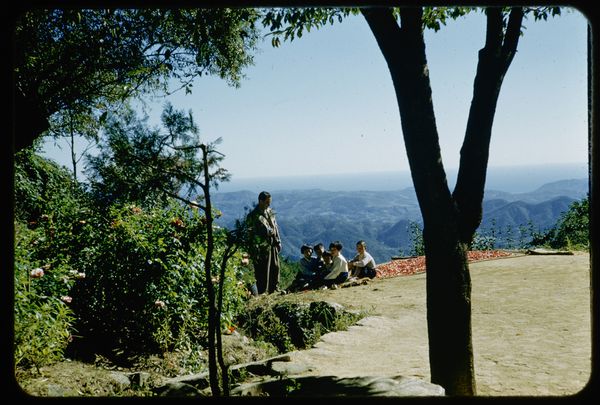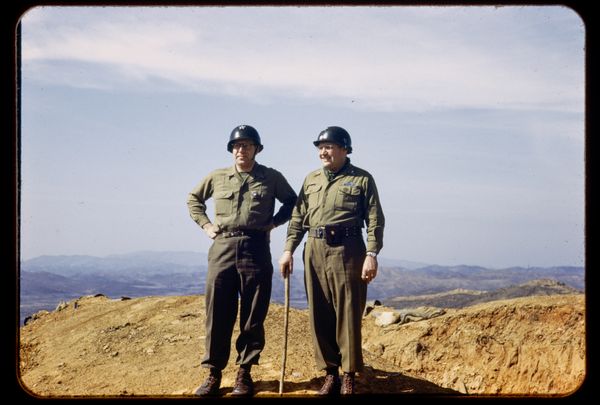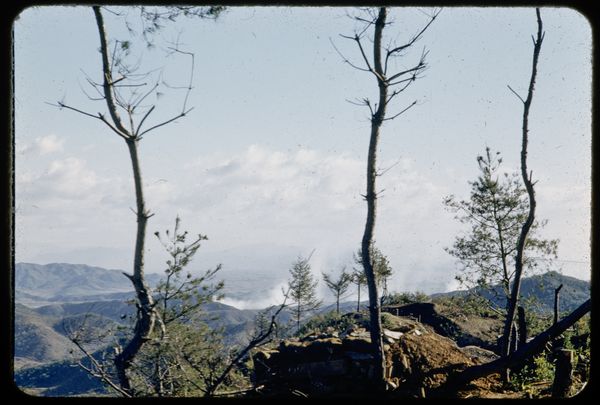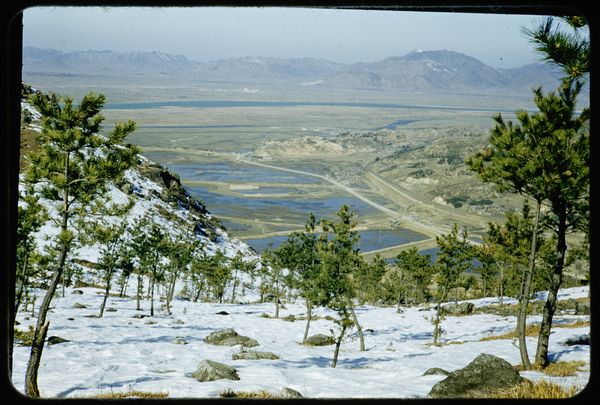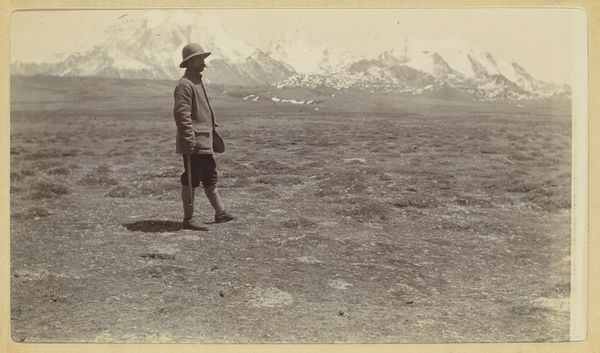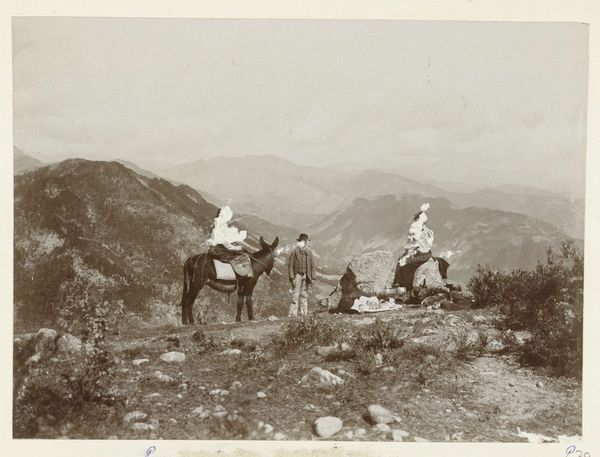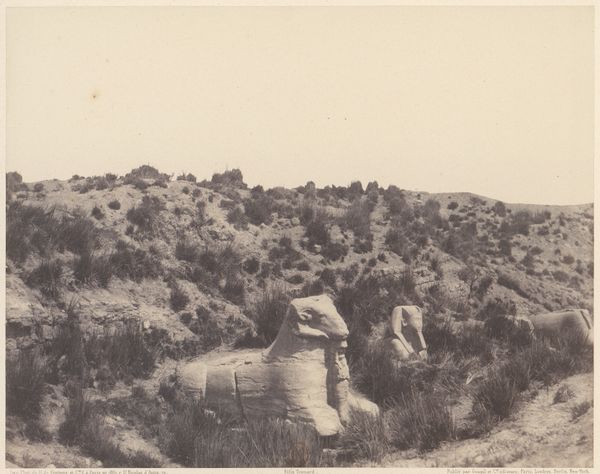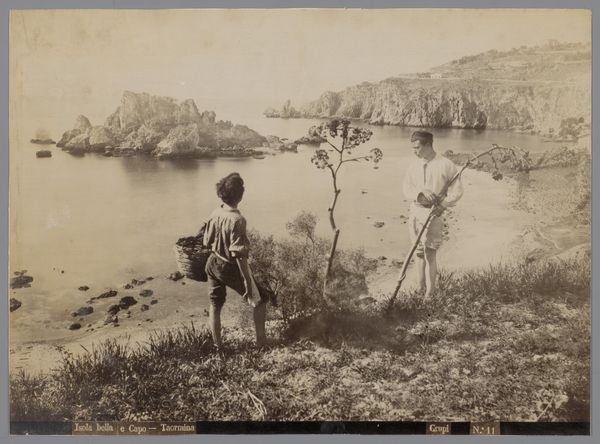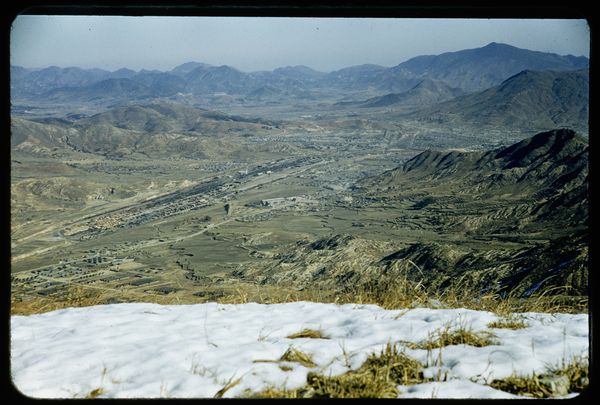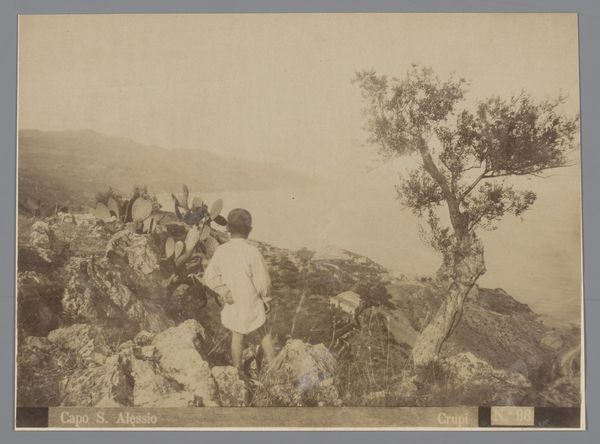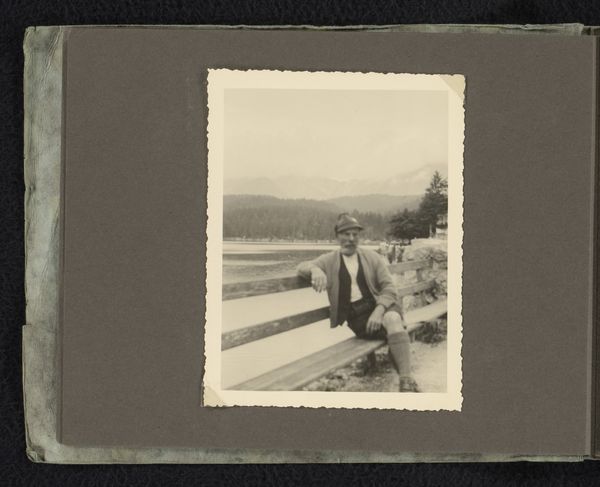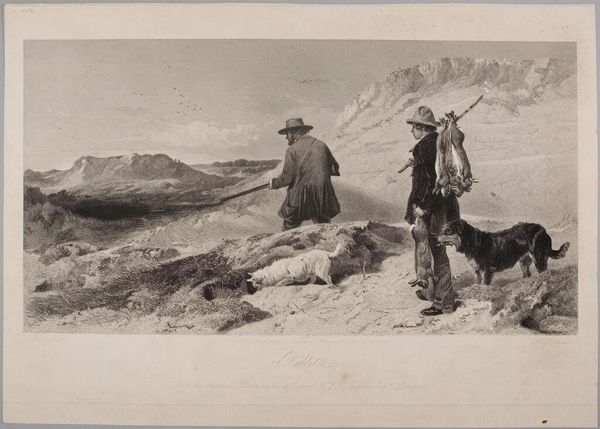
Dimensions: height 5 cm, width 5 cm
Copyright: Rijks Museum: Open Domain
Editor: Here we have David Ketel’s photograph from 1952, "Een Europese man met de Koreaanse Prins Fridi," held at the Rijksmuseum. It depicts two men in suits posed against a vast landscape. There’s something unsettling in the contrast between the formal wear and the seemingly untouched scenery. What strikes you most about this photograph? Curator: Well, let's start with the material conditions of its production. This photograph exists because of specific technological advancements – improvements in camera technology and readily available film. The resulting image captures a staged encounter within a complex colonial context. Consider the clothing, right? The heavy suits signify not only formality but also a particular Western idea of civilization, awkwardly juxtaposed against the Korean landscape. Editor: So the very act of creating this image embodies a power dynamic? Curator: Precisely. Who controls the means of representation matters. Ketel, the photographer, a European man, is documenting a Korean prince in a way that is very much informed by Western conventions of portraiture. We have to ask, what labor and resources were involved in bringing these men, these clothes, and this photographic technology to this place at this particular moment in time? The photograph is not merely a record; it's a product of those interactions. What impact did these materials have on the region’s ecology, for example? Editor: I hadn't considered the environmental cost implied in the very making of the photo. That's… sobering. Curator: And think about the distribution of the image. Where was it seen? Who was it intended for? Was it used to bolster a specific political narrative, perhaps solidifying Western presence or influence? It all comes down to understanding the processes of production and consumption tied into this seemingly simple image. Editor: I see it differently now. The photo isn't just a portrait of two men, it's a record of complex economic and social systems intersecting in that one place. Thank you! Curator: Indeed. And thinking about it in this way encourages us to challenge assumptions about the seemingly natural or inevitable order of things. A photograph that, at first glance, seemed benign reveals a lot about labor, trade, and, fundamentally, power.
Comments
No comments
Be the first to comment and join the conversation on the ultimate creative platform.
